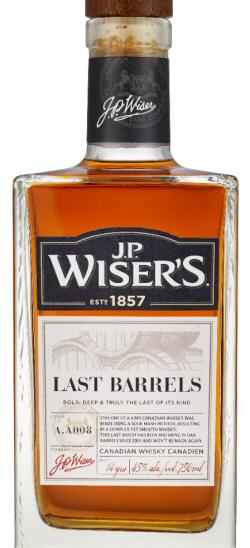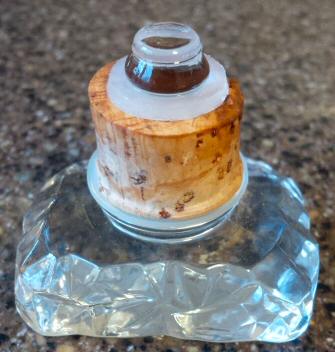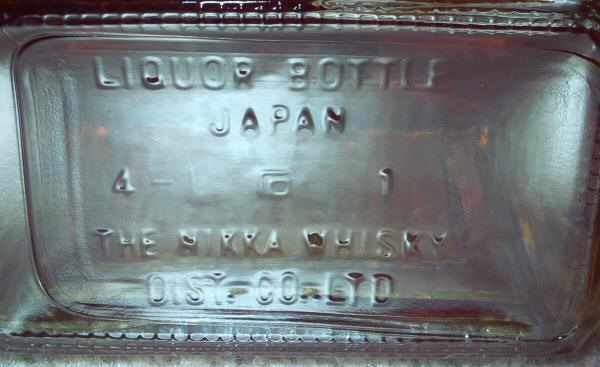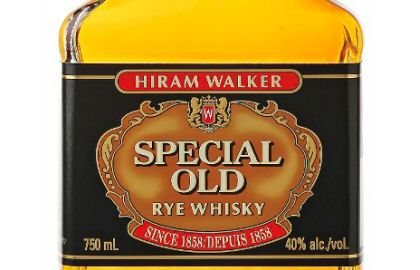Bunnahabhain 18 Year Old

As mentioned in my recent Bunnahabhain 12 year old review, this Islay distillery is distinctive for not using peat in its core line of whiskies. The age-statement expressions of Bunnahabhain are thus more easily comparable to many of the whiskies from the classic mainland regions of Scotland.
Impressively, all these single malt expressions lack artificial caramel colouring, are non-chill-filtered, and are bottled at a relatively high 46.3% ABV. These choices speak well to the quality focus of the distillery. As with the 12 yo, this expression is matured in a mix of ex-bourbon and ex-Oloroso sherry casks (although the exact proportions are again unknown).
Here is how the Bunna 18 yo compares to similarly-aged expressions in my Meta-Critic database:
Aberlour 18yo: 8.74 ± 0.27 on 11 reviews ($$$$)
Bunnahabhain 12yo: 8.57 ± 0.33 on 15 reviews ($$$)
Bunnahabhain 18yo: 9.01 ± 0.17 on 14 reviews ($$$$$)
Bunnahabhain 25yo: ± 8.85 0.38 on 13 reviews ($$$$$+)
Caol Ila 18yo: 8.67 ± 0.51 on 14 reviews ($$$$$)
GlenDronach 18yo Allardice: 8.71 ± 0.40 on 15 reviews ($$$$$)
Glenfiddich 18yo: 8.57 ± 0.41 on 15 reviews ($$$$$)
Glenlivet 18yo: 8.58 ± 0.19 on 19 reviews ($$$$$)
Glengoyne 18yo: 8.56 ± 0.41 on 11 reviews ($$$$$)
Highland Park 18yo: 9.12 ± 0.25 on 22 reviews ($$$$$)
Oban 18yo: 8.71 ± 0.21 on 11 reviews ($$$$$)
Macallan 18yo Fine Oak: 8.80 ± 0.32 on 11 reviews ($$$$$)
Springbank 18yo: 8.96 ± 0.19 on 16 reviews ($$$$$)
Tomatin 18yo: 8.64 ± 0.21 on 8 reviews ($$$$)
As you can see above, it receives the highest score for an unpeated single malt of this age. The 18 yo even scores higher than the 25 yo “bunny”.
I was so impressed on sampling this expression that I quickly went out and bought a full bottle for myself (despite the rather steep $180 CAD price tag at the LCBO). Here is what I notice in the glass:
Colour: while I don’t normally comment on this (since it can be manipulated), I note that the 18yo is a much richer reddish/brown colour than the 12 yo expression. It clearly shows some extend time in sherry casks (or a higher proportion of sherry casks in the mix).
Nose: Classic sherry notes, with chocolate, raisins, figs and grapes. Has a honeyed sweetness, with some additional plum and apple. Salted caramel, a bit nutty, and with a faint hint of glue (which is oddly not objectionable). All in all, this whisky produces a mouth-watering effect that I typically associate with lightly smokey whiskies that were well-aged in sherry casks. This one is particularly nice, as it seems very rich and creamy (if that is possible to tell by smell).
Palate: All the aromas from the nose are found again on the palate. While not a sherry-bomb, there are a clearly lot of quality casks blended in here – I get rich, creamy cocoa, and a surprising amount of dark fruit. More caramel now too. Malted nuts. Something intriguing, in the way of a light coastal whisky, but with no real smoke or peat (more spicy?). Certainly, a touch of sweet baking spices, like nutmeg and allspice. Happily, it has none of the bitterness that marred the 12 yo for me somewhat. An oily and slightly syrupy mouthfeel, very pleasant to swish around the gums. Doesn’t really need any water – very drinkable at its native 46.3% ABV.
Finish: Fairly long, with dried fruits leading the way. A faint, warming allspice contributes as well. There is a slightly salty/briny residue in the end (which pairs well).
 No trouble draining a glass here – a very pleasant whisky, with nothing significant to criticize. Certainly better than most unpreated malts of comparable age that I’ve tried. This one is very close to my favourite “relaxing for the evening” profile, with a hint of salty spice below a bed of fruit and chocolate.
No trouble draining a glass here – a very pleasant whisky, with nothing significant to criticize. Certainly better than most unpreated malts of comparable age that I’ve tried. This one is very close to my favourite “relaxing for the evening” profile, with a hint of salty spice below a bed of fruit and chocolate.
Personally, the 18 yo is well worth the upgrade from the 12 yo expression for me. While many of the core flavours are similar, the quality proposition is high enough here to justify the price bump (again, for me). There is likely more than just extended aging going on – I’m fairly confident they are using a higher quality cask mix here (especially for the sherried component). I’m looking forward to serving this to fans of comparably-aged Glenlivet and Glenfiddich – I’m sure it it will surprise them.
As you can tell from the high average Meta-Critic score – and low standard deviation – reviewers are consistently positive for this expression. For representative reviews, I recommend you check out the guys at Quebec Whisky, Ruben of Whisky Notes, Ralfy, and My Annoying Opinions.



 Finish: Not particularly sweet, more slightly savoury – like the lingering finish of some south asian dishes. Astringent mouthfeel (with that “maritime air” again). Moderate finish, could be longer.
Finish: Not particularly sweet, more slightly savoury – like the lingering finish of some south asian dishes. Astringent mouthfeel (with that “maritime air” again). Moderate finish, could be longer.
 Again, you can’t really say much from only 4 reviews. But it does seem like Last Barrels is trending around the level of the standard-bearer Lot 40. Here is how it compares to typical American bourbon whiskies in this price range.
Again, you can’t really say much from only 4 reviews. But it does seem like Last Barrels is trending around the level of the standard-bearer Lot 40. Here is how it compares to typical American bourbon whiskies in this price range.
 Certainly a reasonable and tasty enough dram, but nothing that really stands out for me. It does have more of the dry sherry influence than you get in a typical Highland/Speyside whisky of this age, but none of the smoke/peat of the typical Islays. As such, I find it odd that there is so much bitterness throughout here.
Certainly a reasonable and tasty enough dram, but nothing that really stands out for me. It does have more of the dry sherry influence than you get in a typical Highland/Speyside whisky of this age, but none of the smoke/peat of the typical Islays. As such, I find it odd that there is so much bitterness throughout here.
 No longer available in Ontario, I picked up a 375mL bottle of this 40% ABV whisky during recent travels in BC (for only ~$25 CAD, taxes-in). I was surprised to see a row of these half-sized bottles of Century Reserve 21 yo on the shelf at the BC Liquors store in Westbrook Village, as this item is not currently listed on their website (in any size). An image of the actual 375mL bottle is shown on the right (see the stock photo at the bottom of this page for what the 750mL bottle looks like).
No longer available in Ontario, I picked up a 375mL bottle of this 40% ABV whisky during recent travels in BC (for only ~$25 CAD, taxes-in). I was surprised to see a row of these half-sized bottles of Century Reserve 21 yo on the shelf at the BC Liquors store in Westbrook Village, as this item is not currently listed on their website (in any size). An image of the actual 375mL bottle is shown on the right (see the stock photo at the bottom of this page for what the 750mL bottle looks like). I was even more surprised when I turned the bottle over, looking for potential batch codes. I didn’t find any, but here is what is embossed onto the base of the glass bottle:
I was even more surprised when I turned the bottle over, looking for potential batch codes. I didn’t find any, but here is what is embossed onto the base of the glass bottle:
 The official tasting notes mention honey a lot, but I really don’t find that here – it’s a much lighter sweetness, combined with buttery and creamy overtones. Comparing it to the
The official tasting notes mention honey a lot, but I really don’t find that here – it’s a much lighter sweetness, combined with buttery and creamy overtones. Comparing it to the 
 Let’s see how they compare on in the Meta-Critic database, relative to other popular entry-level malt whiskies (age and non-age expressions).
Let’s see how they compare on in the Meta-Critic database, relative to other popular entry-level malt whiskies (age and non-age expressions). Nose: My core notes read the same – slightly sweet, light fruits like apple, slightly floral. But there is more going on here, with a malty characteristic now. There is an almost maritime air, with hints of salty chocolate (i.e., seems like it could be just a tiny touch sherried). Definitely a more complex nose than the 12 yo. Unfortunately, the solvent characteristic is also more noticeable (a touch of glue in particular).
Nose: My core notes read the same – slightly sweet, light fruits like apple, slightly floral. But there is more going on here, with a malty characteristic now. There is an almost maritime air, with hints of salty chocolate (i.e., seems like it could be just a tiny touch sherried). Definitely a more complex nose than the 12 yo. Unfortunately, the solvent characteristic is also more noticeable (a touch of glue in particular).
 Finish: Long. The sweetness continues for a good long while, and there is no hint of the bitterness that often accompanies sherry bombs on the way out. Water doesn’t change much here, for good or ill. You’ll be enjoying the after-glow of this whisky long after you’ve finished the glass. 😉
Finish: Long. The sweetness continues for a good long while, and there is no hint of the bitterness that often accompanies sherry bombs on the way out. Water doesn’t change much here, for good or ill. You’ll be enjoying the after-glow of this whisky long after you’ve finished the glass. 😉
 Finish: Very long, with lingering smoke and ash. That balance of spicy and sweet (e.g., black licorice) persists as well.
Finish: Very long, with lingering smoke and ash. That balance of spicy and sweet (e.g., black licorice) persists as well.
 UPDATE JANUARY 2016: Like many bargain Canadian ryes, lot variation can be considerable on these. I recently picked up a second bottle, and find the nose is muted in comparison, especially for the rye spices – and there is a distinct glue-like solvent smell now. The palate is generally similar, but feels “hotter” (i.e., more raw ethanol taste). Finish is comparable, although perhaps a touch less bitter (which would actually be an improvement).
UPDATE JANUARY 2016: Like many bargain Canadian ryes, lot variation can be considerable on these. I recently picked up a second bottle, and find the nose is muted in comparison, especially for the rye spices – and there is a distinct glue-like solvent smell now. The palate is generally similar, but feels “hotter” (i.e., more raw ethanol taste). Finish is comparable, although perhaps a touch less bitter (which would actually be an improvement).
 Té Bheag is a great value for what it is – a decent Scotch blend at an excellent price. It has noticeable traces of peated barley and sherry cask finishing – an uncommon combination in an inexpensive blend. Despite the Isle of Skye origin, I could see this as the poor man’s Highland Park. 🙂 Indeed, while it is challenging to equate blend scores with single malts, I am also struck by how well Te Bheag matches the more-expensive entry level HPs, as shown below:
Té Bheag is a great value for what it is – a decent Scotch blend at an excellent price. It has noticeable traces of peated barley and sherry cask finishing – an uncommon combination in an inexpensive blend. Despite the Isle of Skye origin, I could see this as the poor man’s Highland Park. 🙂 Indeed, while it is challenging to equate blend scores with single malts, I am also struck by how well Te Bheag matches the more-expensive entry level HPs, as shown below: